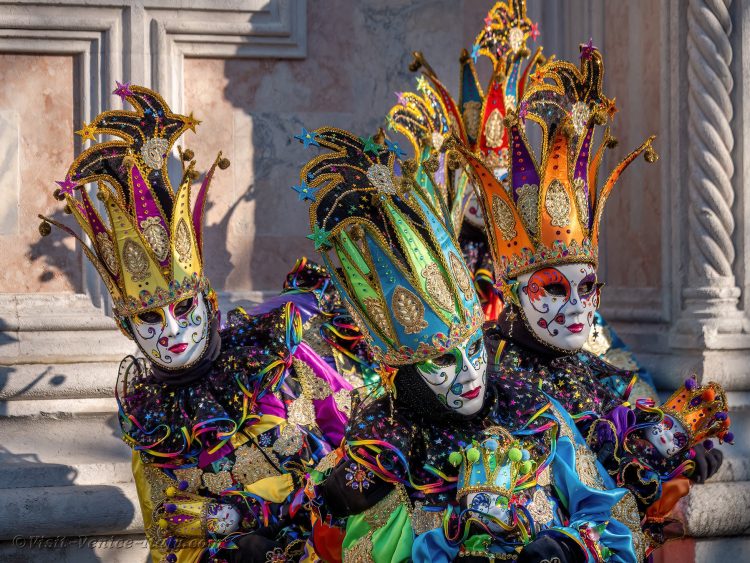The Origins and Cultural Meaning of Carnevale in Italy
Carnevale is one of Italy’s most cherished and vibrant festivals, celebrated in many regions across the country with enthusiasm, creativity, and cultural pride. Its roots stretch back centuries, and the festival is steeped in rich historical, religious, and social significance. The name “Carnevale” itself comes from the Latin carne levare, meaning “to remove meat,” referring to the ritual of fasting and abstaining from meat during the Christian season of Lent. This period of fasting and reflection is preceded by the indulgence of Carnevale, where people feast, drink, and enjoy all the pleasures of life before the solemnity of Lent begins.
Historically, Carnevale was a time for the common people to celebrate and engage in revelry, often with a sense of temporary freedom and anonymity. The festival was a way to temporarily break down social hierarchies, with the wearing of masks and costumes allowing people to assume different identities and interact without the constraints of their usual social status. This tradition of anonymity and masquerading is still an essential part of the celebration today.
The origins of Carnevale can be traced back to ancient Roman and medieval festivities. During the Roman Empire, Saturnalia, a festival dedicated to the god Saturn, involved feasting, revelry, and role reversals, where slaves and masters would switch places. As Christianity spread throughout Europe, these pre-existing pagan traditions merged with religious observances, giving rise to the more familiar forms of Carnevale we see today.
Carnevale became particularly prominent in Italy during the Renaissance period, with cities like Venice, Rome, and Florence turning the festival into a grand spectacle. Venice, in particular, became synonymous with Carnevale, and the city’s elaborate celebrations of masks and costumes are among the most iconic in the world. Over time, Carnevale spread throughout Italy, with each region developing its own distinct traditions, music, and customs. Despite its religious origins, Carnevale has evolved into a time of joyous celebration, marked by parades, music, dancing, and, of course, the wearing of intricate masks and costumes.
Key Carnevale Celebrations: Venice, Viareggio, and Ivrea
Although Carnevale is celebrated throughout Italy, there are several cities where the festival reaches its peak, each offering its own unique take on this ancient tradition. Among the most famous are Venice, Viareggio, and Ivrea, each of which offers a different way to experience this colorful and exhilarating festival.
- Venice: The Masquerade of Elegance
Venice is perhaps the most famous city in the world when it comes to Carnevale, known for its breathtakingly elaborate masks and grandiose celebrations. The Venice Carnevale is a spectacle of opulence, where participants don luxurious costumes and intricately designed masks, transforming the city into a fantastical world of intrigue and mystery. For centuries, the Venice Carnevale has been a time for both locals and tourists to engage in masked balls, street performances, and cultural events.
The highlight of the Venice Carnevale is the grand Volo dell’Angelo, or “Flight of the Angel,” which takes place in St. Mark’s Square. During this event, a costumed performer, usually a local celebrity or prominent figure, descends from the top of the bell tower on a zipline, greeting the crowd with a festive display. This dramatic entrance marks the official opening of the Carnevale season in Venice, which is filled with concerts, theater performances, and masquerade balls. Visitors can also enjoy traditional Venetian sweets like frittelle (fried dough balls) and galani (crispy pastries) during the festival.
- Viareggio: A Carnival of Giant Floats
Viareggio, located on the Tuscan coast, is home to one of Italy’s largest and most visually stunning Carnevale celebrations. What sets Viareggio apart is its massive and colorful floats, many of which can be as large as a building. These floats, which are often satirical in nature, depict caricatures of politicians, celebrities, and social issues, using humor and art to comment on contemporary events. The floats are intricately designed and meticulously crafted, with some featuring moving parts and elaborate mechanical designs.
The main parade takes place along the seafront of Viareggio, where thousands of spectators gather to watch the floats pass by in a stunning display of creativity and craftsmanship. The festival also features music, dancing, and other events, making it a lively and entertaining experience for visitors. Viareggio’s Carnevale is not just about the floats; it also includes masquerade balls, concerts, and street parties that fill the town with energy and excitement.
- Ivrea: The Battle of Oranges
Unlike the elegant masked balls and floats in Venice and Viareggio, the Carnevale of Ivrea, located in the Piedmont region, is famous for its unique and action-packed tradition known as La Battaglia delle Arance (The Battle of the Oranges). This intense and thrilling event is a reenactment of the historical revolt of the people of Ivrea against a tyrannical ruler. During the festival, groups of “orange throwers” engage in a massive food fight, throwing oranges at each other as part of the battle.
The Battle of Oranges has its origins in the 12th century and is deeply symbolic of the city’s resistance against tyranny. The oranges represent the stones once thrown by the people of Ivrea, and the event serves as both a celebration of local pride and a dramatic expression of defiance. Visitors to Ivrea are encouraged to join the battle, though they are advised to wear protective gear, as the intensity of the orange-throwing can result in some rough interactions.
The Ivrea Carnevale is not just about the battle; the town also holds parades, medieval reenactments, and performances that celebrate its rich history and culture. The entire festival creates a sense of community and camaraderie, with both locals and tourists participating in the celebrations.

Traditional Costumes, Masks, and Parades
The wearing of costumes and masks is one of the most distinctive features of Carnevale. These masks allow wearers to hide their identities and assume new personas, creating a sense of freedom and mystery. The tradition of mask-wearing dates back to the 13th century, and over the years, Venetian masks have become synonymous with Carnevale. These masks are often made from high-quality materials, such as papier-mâché, leather, and glass, and are elaborately decorated with feathers, gold leaf, and beads. In Venice, masks are not only worn during the Carnevale, but they also serve as works of art, with many mask makers operating in the city throughout the year.
Traditional Carnevale costumes are equally elaborate, often featuring baroque-style clothing, elaborate wigs, and embroidered fabrics. In Venice, participants may wear gowns and costumes that reflect the opulence of the 18th century, while in Viareggio, the costumes are often more whimsical, in keeping with the playful nature of the parade floats.
In cities like Viareggio, parades are a central aspect of Carnevale. These parades feature elaborate floats, dancers, musicians, and performers, all contributing to the festive atmosphere. The floats in Viareggio are particularly spectacular, with some towering high above the crowds and featuring satirical representations of current events or political figures. In Ivrea, the parades and processions are also an integral part of the festival, showcasing the city’s historical heritage and providing a backdrop for the famous Battle of Oranges.
The Significance of Music, Food, and Dance During the Festival
Carnevale is not just a visual spectacle; it is also a celebration of music, food, and dance. In all Carnevale celebrations, music plays an essential role, with bands, singers, and street performers filling the air with lively tunes. In Venice, the music often has a baroque or classical influence, adding to the elegance and sophistication of the event. In Viareggio, the music is more contemporary, with energetic rhythms accompanying the vibrant floats and colorful costumes.
Food is another key element of Carnevale. Throughout Italy, each region has its own Carnevale specialties, often including rich pastries, fried dough, and sweet treats. In Venice, frittelle (fried dough balls) and galani (crispy pastries) are popular snacks, while in Viareggio, cenci (fried pastries dusted with sugar) are a common indulgence. In Ivrea, locals traditionally enjoy torta di arance (orange cake) in honor of the Battle of Oranges.
Dance is also an important part of Carnevale, with many cities hosting balls and public dances. In Venice, the grand masquerade balls are some of the most anticipated events, attracting both locals and tourists to dance the night away in elaborate costumes. In Viareggio, the carnival parade is accompanied by lively street performances, and in Ivrea, traditional dances are performed to celebrate the city’s historical heritage.
Travel Tips for Experiencing Carnevale Firsthand
If you plan to visit Italy during Carnevale, here are a few tips to make the most of your experience:
- Book Accommodations Early
Carnevale is one of Italy’s most popular festivals, and hotels and accommodations can fill up quickly. Be sure to book your stay well in advance, especially if you are visiting Venice, Viareggio, or Ivrea. - Wear Comfortable Shoes
Many Carnevale celebrations involve walking, standing, and dancing, so make sure to wear comfortable shoes. In cities like Venice, you will also be navigating narrow streets and bridges, so be prepared for lots of walking. - Get Involved
While some aspects of Carnevale are more formal, like attending masquerade balls, there are plenty of opportunities to participate in the festivities. In Ivrea, join the orange-throwing battle (with proper protection), or in Viareggio, cheer on the floats and take photos with the costumed participants. - Respect Local Traditions
Carnevale is a time of revelry and fun, but it is important to respect local customs and traditions. Be mindful of the cultural significance of the event and approach it with an open mind.
Conclusion
Carnevale is a time for Italians to celebrate their history, culture, and sense of community in vibrant and creative ways. Whether you are marveling at the masks and floats in Venice, throwing oranges in Ivrea, or dancing on the streets of Viareggio, Carnevale offers a once-in-a-lifetime experience that showcases the best of Italy’s festive spirit. From its deep historical roots to its modern-day celebrations, Carnevale is a testament to the enduring importance of tradition, creativity, and joy in Italian culture.





















